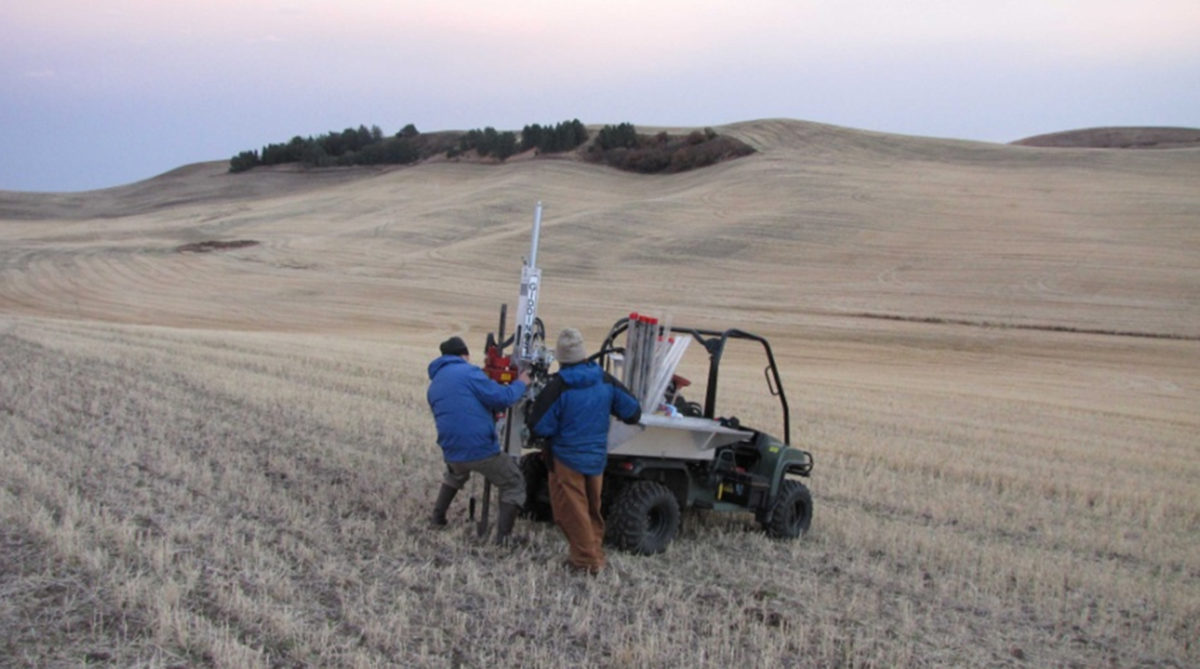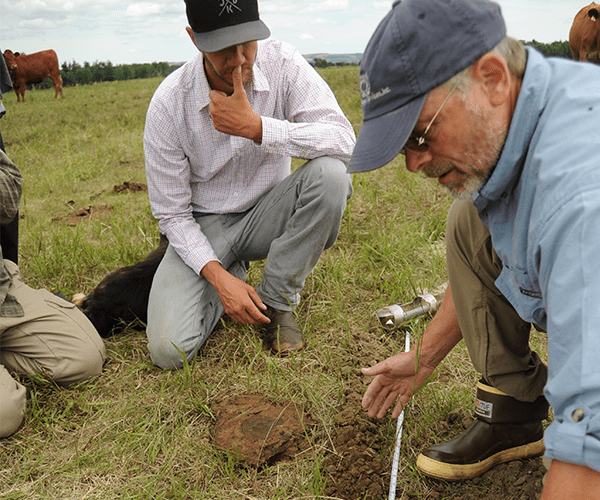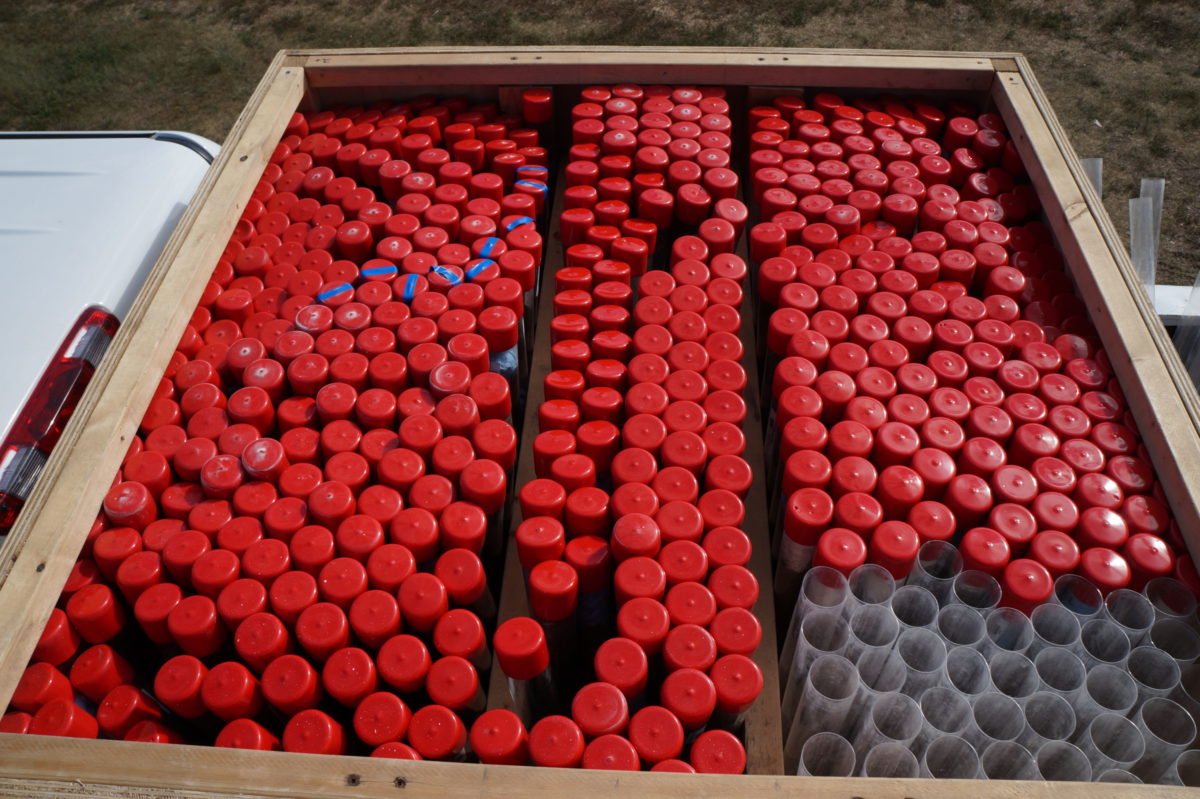Soil Health
Restoring at Scale
What is Soil Health?
It has been succinctly defined as “the continued capacity of soil to function as a vital living ecosystem that sustains life for plants, animals, humans and ecosystems” (USDA, NRCS). |

Much more than just dirt— healthy soil is a complex, living system comprised of numerous and diverse bacteria, fungi, and invertebrates that maintain vital functions for future generations.
Healthy soil is a medium for plant growth, regulates water flows through infiltration and percolation, filters and buffers pollutants from water, recycles and stores essential nutrients required for plant growth, provides sustainable habitat for living things, and much more, including modulating the earth’s atmosphere.
Creatively caring for soil health requires seeing soil as a living entity, as only living things can be said to possess health. Caring for soils boils down to four simple strategies: keeping the soil covered with living and/or dead plant matter, maintaining living root systems in the soil, ensuring the plant and soil microbial life is diverse, and integrating wildlife and livestock in appropriate ways on farm and pasture lands. For nearly four decades, RES scientists have made soil health principles, and the vision of using ecosystem and soil health restoration, the cornerstone of thousands of projects worldwide.
Long before it was trendy, our scientists have been focused on soil health.
We have worked with farmers and ranchers, government agencies, universities, NGOs, and private companies to improve soil health. By emulating healthy ecosystems, such as those found in natural areas, we continually translate new ways nature restores the soils, and help clients do the same.
We at RES view the land and soil as one seamless, integrated system. Taking this perspective means that we are always looking for ways to improve land, water, and biodiversity—for the whole. We have worked on marginal agricultural lands—where soil disruptions have been severe—and used native plants to restore the prairies, wetlands, savannas, and woodlands. And, on private and public agricultural lands with higher quality soil—areas with significant recuperative potential—we provide science-based strategies for land planning and management that will boost productivity and profitability.


How Do We Measure and Improve Soil Health?
In a nutshell, we:
- Measure soil carbon using our globally approved quantification method (VM0021 – Soil Carbon Quantification Method, approved by Verra)
- Map changes in soil carbon in soils that can be used to create a new revenue stream of carbon credits for farmers and ranchers
- Share research with innovative farmers and ranchers to help improve the soil health of their holdings
The use of customized GIS and remote sensing tools, field measurements, and ecological expertise are the keys to success in gathering accurate measurements and mapping. Our geospatial experts coordinate with the team of soil scientists and ecologists to develop a soil sampling plan that adequately represents surface and subterranean features of interest through a biophysical stratification method. Our spatial datasets are used to create efficient field sampling and desktop analysis. We use mobile apps – such as Collector for ArcGIS – to identify and navigate to sampling locations, understand elevational gradients and soil series datasets. This facilitates the collection of spatially accurate data and georeferenced imagery, which streamlines fieldwork and data management efficiency.
The result—combining soil health measurements and mapping—allows us to demonstrate how simple, cost-effective, and practical decisions can be used to improve agricultural yields and mitigate the effects of climate change.
